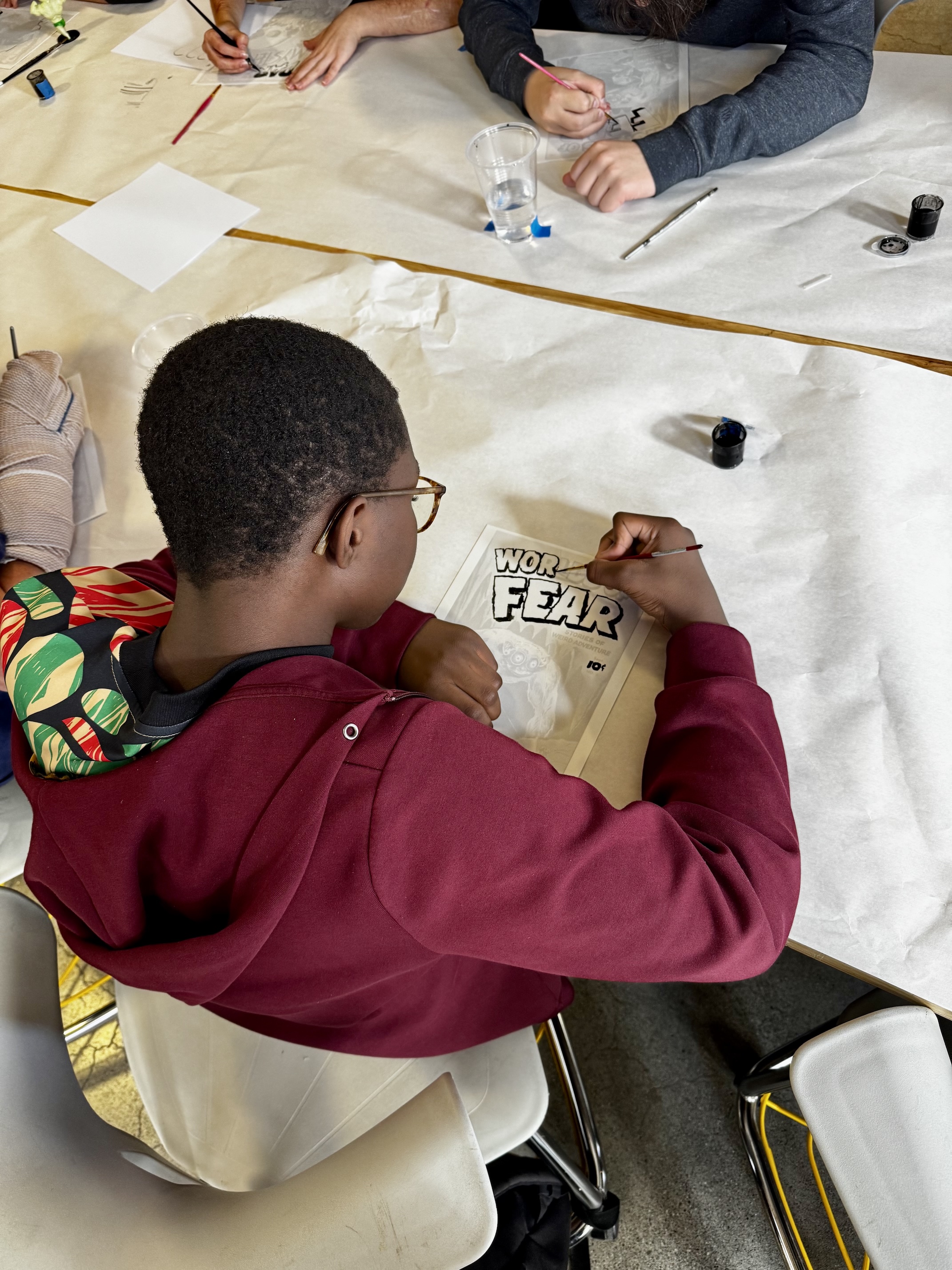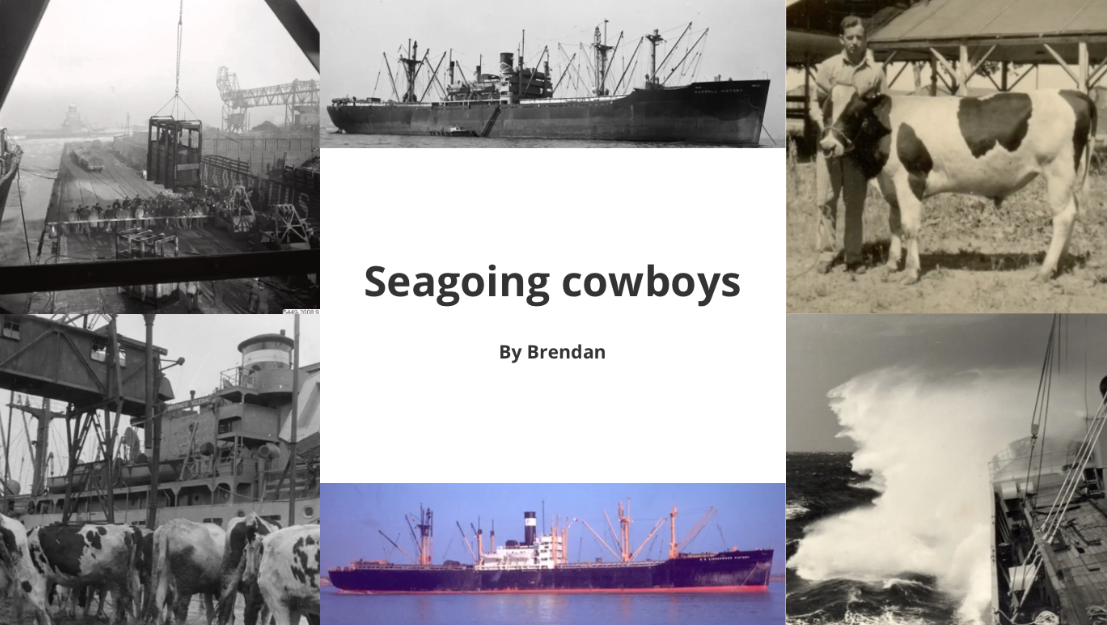October 27, 2025
Human Histories: Unearthing Stories Through Research, Writing, and Design
“Design is not well done unless you can tell a good story about it.”

Every year, NuVu’s writing and research studio returns with a new theme that invites students to explore the intersections between personal narrative, history, and storytelling. This fall, coach Heide Solbrig led Hidden Histories: Immigration, a deep dive into how individual and collective stories shape our understanding of the past.
“The purpose of this studio is really to get students excited about research and writing,” says Heide. “We want them to realize that real research involves more than a Google search—it’s about finding authentic materials, reading deeply, and synthesizing your own thoughts and feelings about what you’ve learned.”

Research as Storytelling
Students began by drawing a comic about their family’s immigration story, encouraging them to explore personal histories through visual storytelling. For some, that meant learning about a grandparent’s journey across continents; for others, it was discovering family legends—like a grandfather who once delivered cows to Europe.
From there, students developed individual research projects ranging from academic essays and podcasts to historical comics and video essays. Each student also produced a zine-based research proposal, combining visual design with traditional academic components such as an abstract, research question, and hypothesis. “It’s a good way to learn what a research proposal is in a fun way,” says Heide. “You get to collect images, but you still follow that classical model of how research works.”

Merging Creativity and Critical Thinking
The studio’s flexibility allows students to pursue topics close to their hearts while honing essential writing and analytical skills. One student created a braided essay interweaving her experiences in cosplay culture with historic examples of costume and performance—from 15th-century Japan to 18th-century England’s masquerade balls. “They were amazed to learn that sci-fi conventions, which they go to regularly, have been around since the 1950s,” Heide recalls.
This blend of personal and historical exploration gives students a richer, more connected understanding of history—and of themselves. “You can’t design well unless you understand and can write about what you’re designing,” Heide explains. “Being able to tell a good story makes everything stronger.”
Why It Matters
For Heide, Hidden Histories represents the best of NuVu’s interdisciplinary approach—where design, storytelling, and scholarship converge. “I love that kids have fun doing research and writing,” she says. “It’s part of helping them understand the world, where knowledge comes from, and what counts as legitimate. Seeing them care about that—it’s powerful.”
Or, as she puts it best: “Design is not well done unless you can tell a good story about it.”
👉 Take a closer look at one of the student projects from Hidden Histories: Max, Elise, and Brendan’s final presentation.






